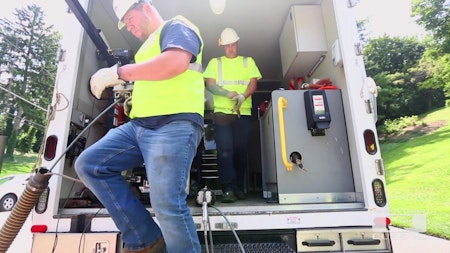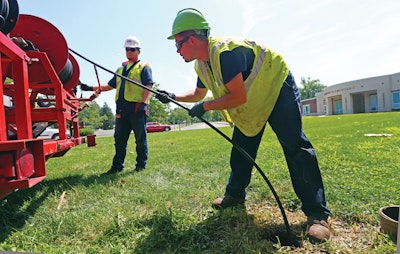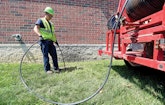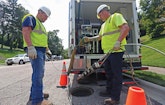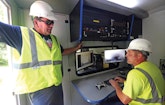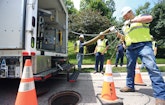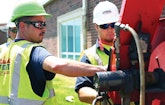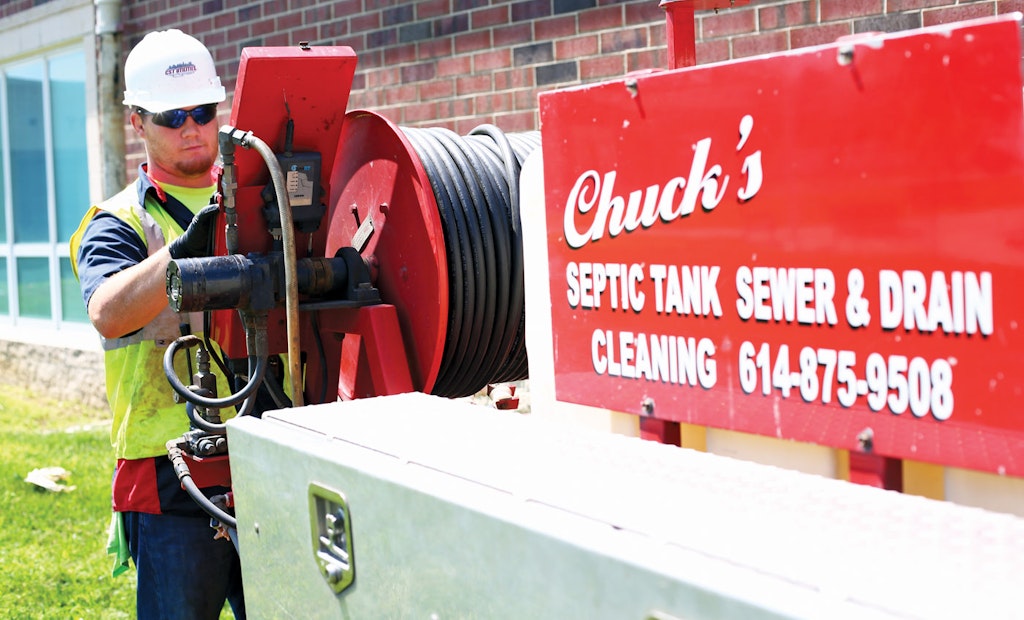
Michael Snider of Chuck’s Septic Tank Sewer & Drain Cleaning operates the controls on a Harben trailer jetter while clearing a drainline.
If Chuck Lang Jr. believes in only one thing, it’s this: You have to spend money to make money.
About 15 years ago, Lang, the owner of Chuck’s Septic Tank, Sewer & Drain Cleaning, took a financial leap of faith and invested roughly $300,000 in a Vacall - Gradall...
